该文章主要为完成实训任务,详细实现过程及结果见【http://t.csdn.cn/Z2viP】
一、Application.properites配置文件
1.1 创建Spring Boot的Web项目ProperitesDemo
- 利用
Spring Initializr方式创建项目

- 设置项目编码为utf8(尤其注意复选框)
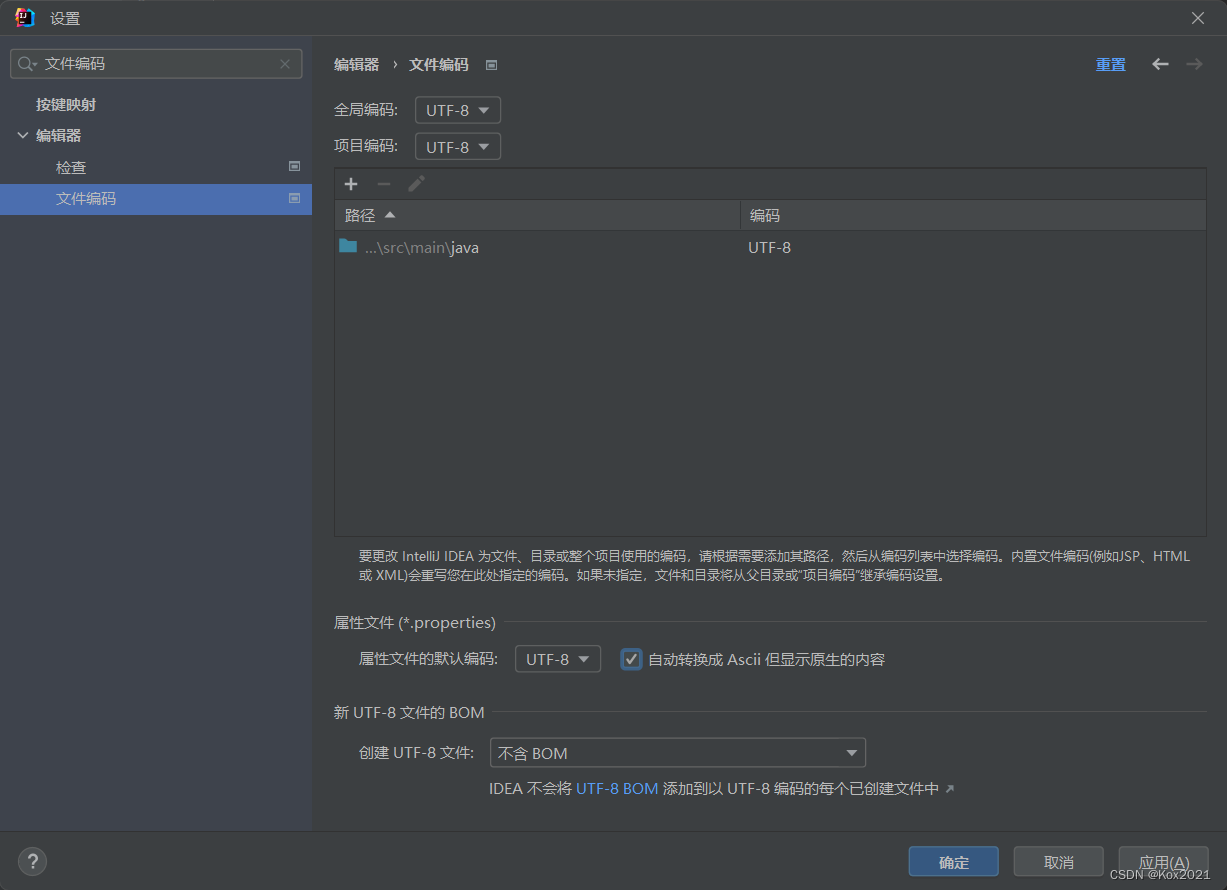
1.2 在应用属性文件里添加相关配置
1. 配置服务器端口号和web虚拟路径
- 在
application.properties文件里配置

# 设置服务端口号
server.port=8888
# 设置web虚拟路径
server.servlet.context-path=/lzy
2. 对象类型的配置与使用
(1)创建Pet类
- 在
cn.kox.boot里创建bean子包,在子包里创建Pet类
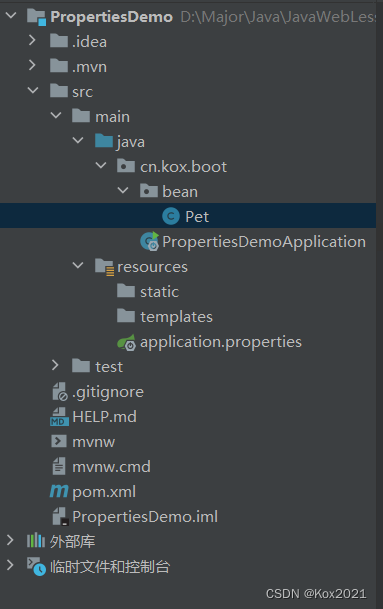
package cn.kox.boot.bean;
/**
* @ClassName: Pet
* @Author: Kox
* @Data: 2023/6/13
* @Sketch:
*/
public class Pet {
private String type; // 类型
private String name; // 名字
public String getType() {
return type;
}
public void setType(String type) {
this.type = type;
}
public String getName() {
return name;
}
public void setName(String name) {
this.name = name;
}
@Override
public String toString() {
return "Pet{" +
"type='" + type + '\'' +
", name='" + name + '\'' +
'}';
}
}
(2)创建Person类
- 在
cn.kox.boot.bean包里创建Person类
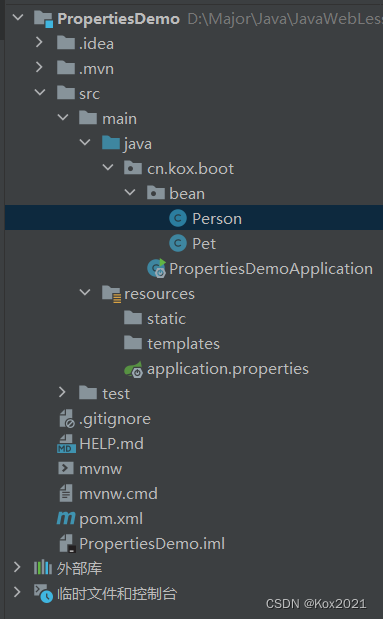
package cn.kox.boot.bean;
import java.util.List;
import java.util.Map;
/**
* @ClassName: Person
* @Author: Kox
* @Data: 2023/6/13
* @Sketch:
*/
public class Person {
private int id; // 编号
private String name; // 姓名
private List<String> hobby; // 爱好;
private Map<String, String> family; // 家庭成员
private Pet pet; // 宠物
public int getId() {
return id;
}
public void setId(int id) {
this.id = id;
}
public String getName() {
return name;
}
public void setName(String name) {
this.name = name;
}
public List<String> getHobby() {
return hobby;
}
public void setHobby(List<String> hobby) {
this.hobby = hobby;
}
public Map<String, String> getFamily() {
return family;
}
public void setFamily(Map<String, String> family) {
this.family = family;
}
public Pet getPet() {
return pet;
}
public void setPet(Pet pet) {
this.pet = pet;
}
@Override
public String toString() {
return "Person{" +
"id=" + id +
", name='" + name + '\'' +
", hobby=" + hobby +
", family=" + family +
", pet=" + pet +
'}';
}
}
(3)在应用属性文件里配置对象
# 配置对象
person.id=1
person.name=张三丰
person.hobby=旅游,美食,音乐
person.family.father=张云光
person.family.mother=吴文燕
person.family.grandpa=张宏宇
person.famliy.grandma=唐雨欣
person.family.son=张君宝
person.family.daughter=张晓敏
person.pet.type=泰迪犬
person.pet.name=瑞瑞
- 配置Person对象属性
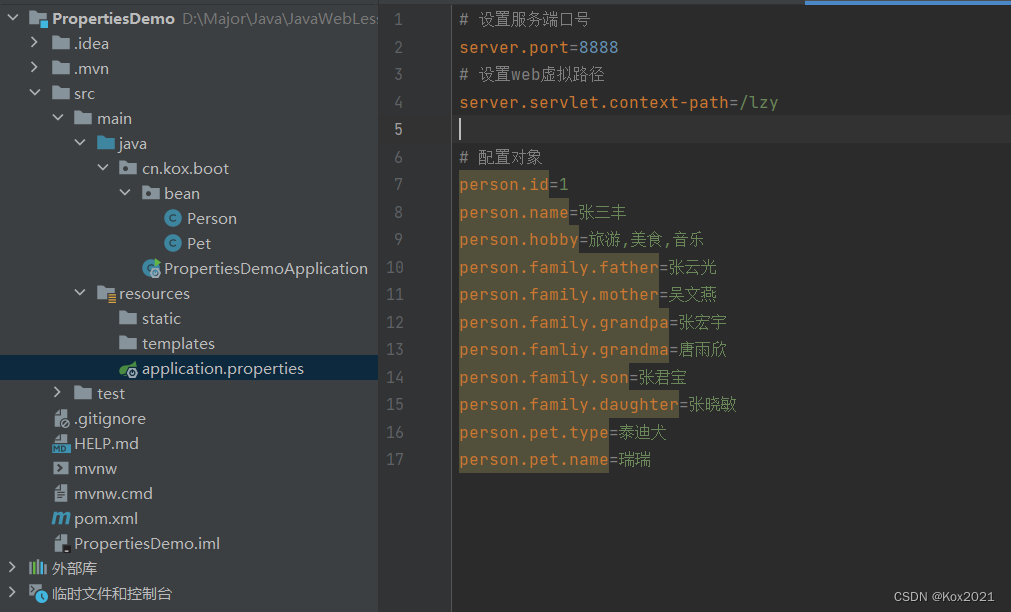
(4)给Person类添加注解
- 添加注解
@Component,交给Spring去管理
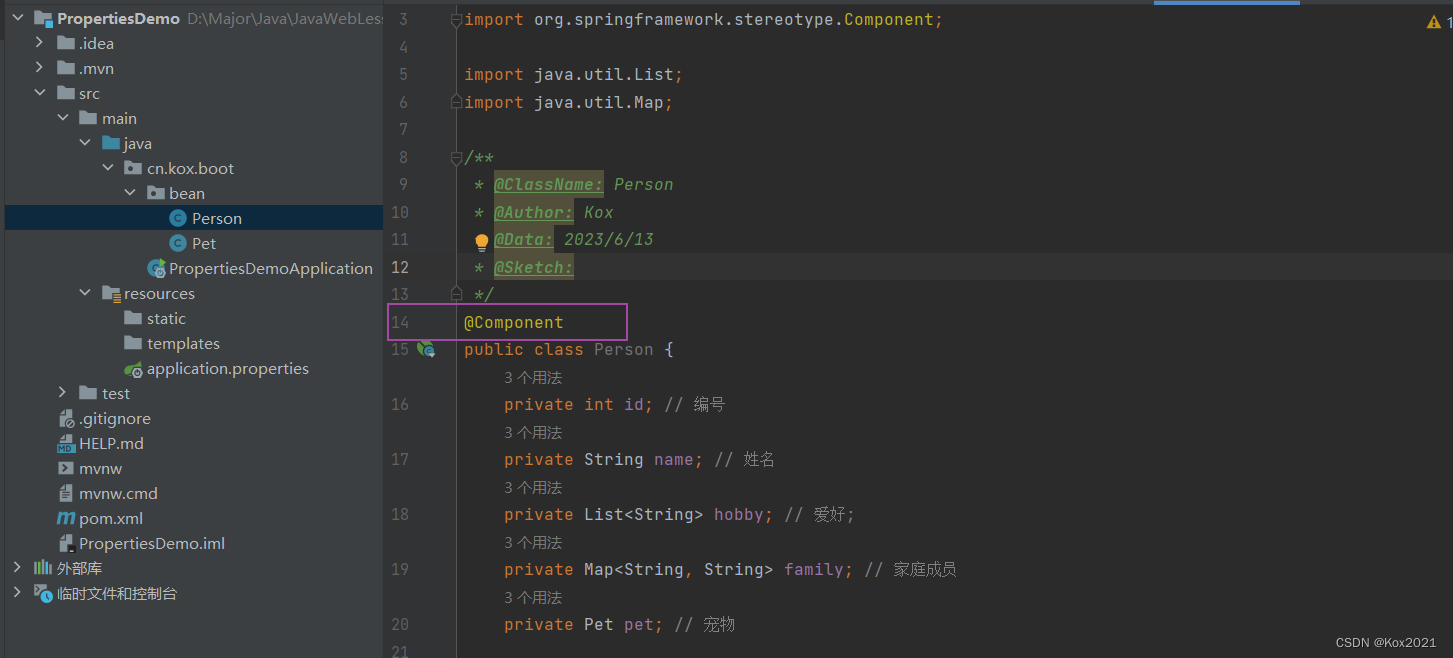
- 添加注解
@ConfigurationProperties(prefix = "person")
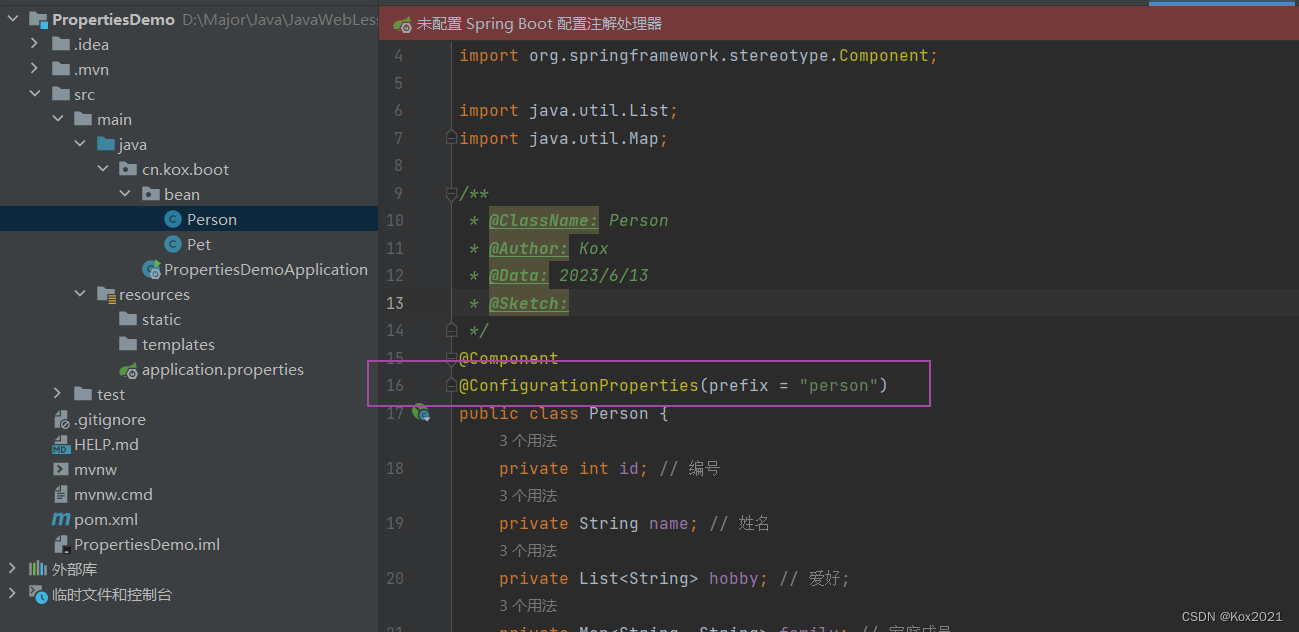
- 配置Spring Boot注解处理器,去掉红色光条里的提示信息

<dependency>
<groupId>org.springframework.boot</groupId>
<artifactId>spring-boot-configuration-processor</artifactId>
<optional>true</optional>
</dependency>
(5)给Pet类添加注解
- 添加注解
@Component,交给Spring去管理 - 添加注解
@ConfigurationProperties(prefix = "person.pet")- 可以不用添加

(6)从Spring容器里获取Person类的实例并输出
package cn.kox.boot;
import cn.kox.boot.bean.Person;
import org.junit.jupiter.api.Test;
import org.springframework.beans.BeansException;
import org.springframework.boot.test.context.SpringBootTest;
import org.springframework.context.ApplicationContext;
import org.springframework.context.ApplicationContextAware;
@SpringBootTest
class PropertiesDemoApplicationTests implements ApplicationContextAware {
private ApplicationContext context; // 应用容器
@Test
void contextLoads() {
}
@Override
public void setApplicationContext(ApplicationContext applicationContext)
throws BeansException {
context = applicationContext;
}
@Test
public void testPerson() {
// 按名称从应用容器里获取Person对象
Person person = (Person) context.getBean("person");
// 输出Person对象
System.out.println(person);
}
}

(7)从Spring容器里获取Pet类的实例并输出
- 在测试类里添加测试方法testPet()

- 运行测试方法testPet(),查看结果
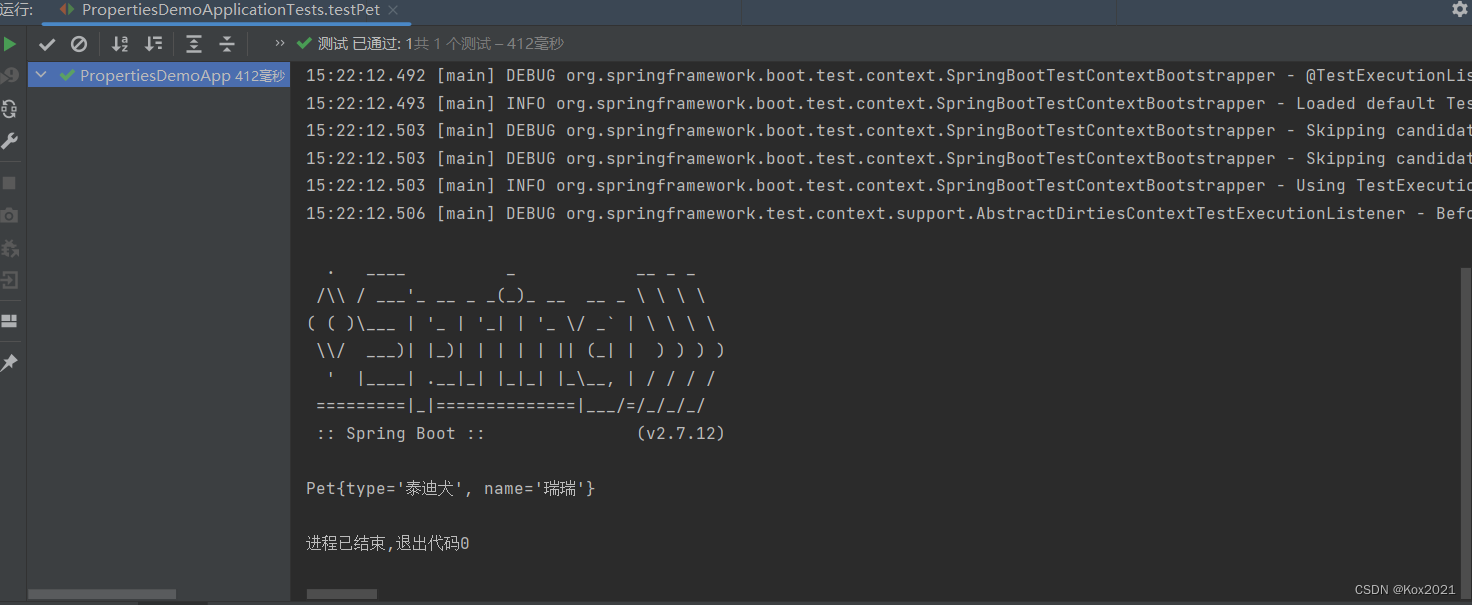
二、Application.yaml配置文件
2.1 备份application.properties文件
- 文件更名为
application.back,即让此文件不起作用
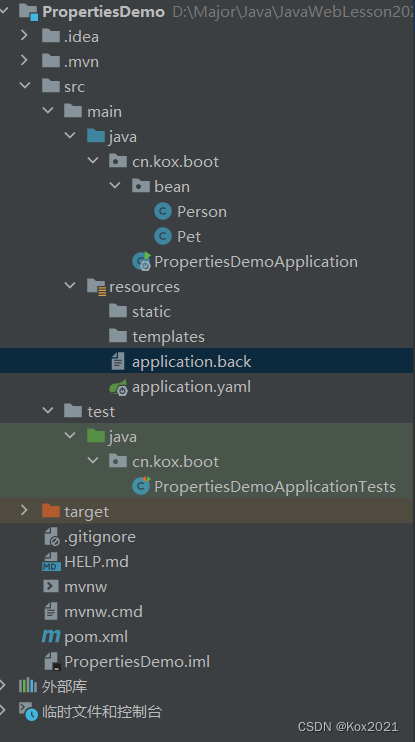
2.2 创建application.yaml文件
- 在
resoures目录里创建application.yaml文件

# 配置服务器
server:
port: 8888 # 配置端口号
servlet:
context-path: /lzy # 配置虚拟路径
# 配置person对象
person:
id: 1
name: 张三丰
hobby:
旅游,
美食,
音乐
family: {
father: 张云光,
mother: 吴文燕,
grandpa: 张宏宇,
grandma: 唐雨欣,
son: 张君宝,
daughter: 张晓敏
}
pet:
type: 泰迪犬
name: 瑞瑞
# 配置pet对象
pet:
type: 泰迪犬
name: 瑞瑞
logging:
level:
root: OFF
2.3 运行测试方法,查看结果
- 运行
testPerson()方法

- 运行测试方法
testPet()
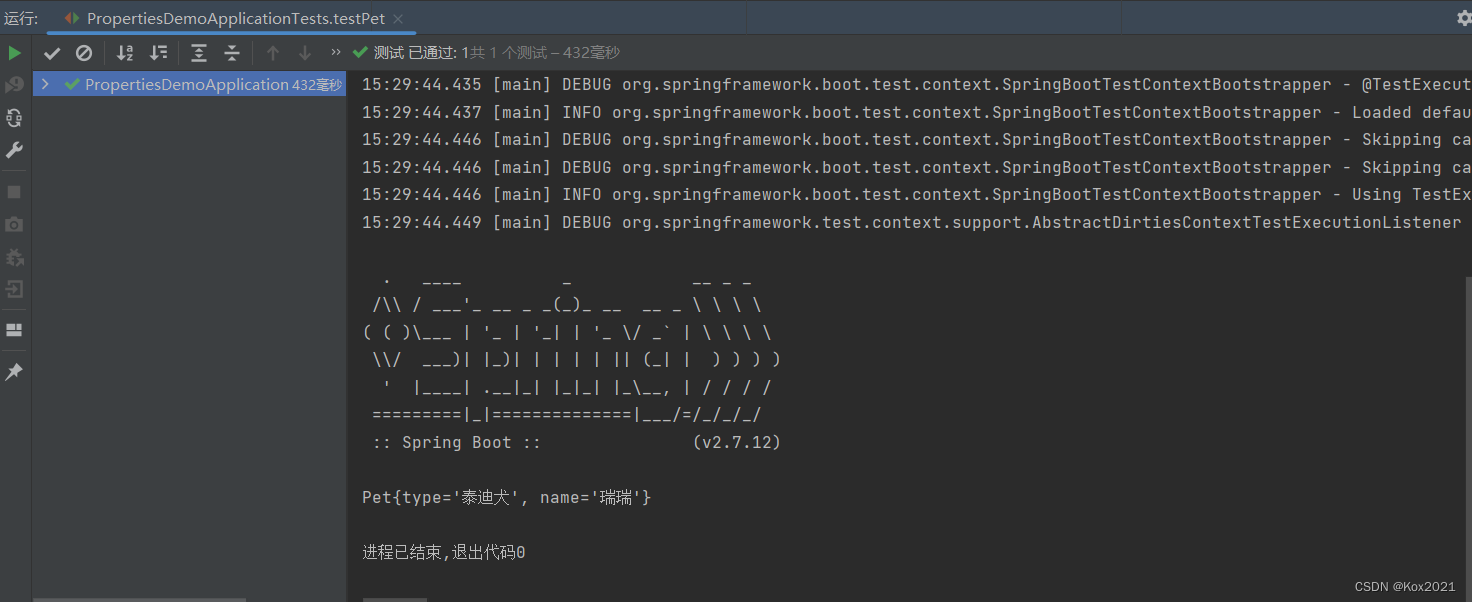






















 718
718











 被折叠的 条评论
为什么被折叠?
被折叠的 条评论
为什么被折叠?








